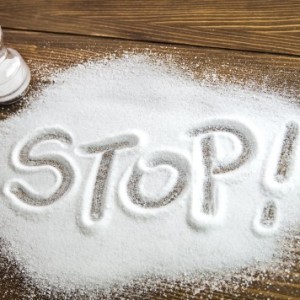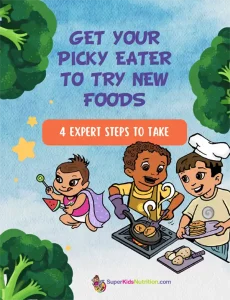
Your kids are likely getting too much salt! Learn which foods contribute to the most sodium.
Watch out little hearts! You might be pumping too hard from salt over-load. A new study released by the Centers for Disease Control shows that 9 in 10 US children, ages 6-18, are consuming sodium at concerning levels. Children are ingesting 3,300 mg of sodium, on average, before it’s added at the table. It shouldn’t be all that surprising that most Americans receive more than 75% of their daily sodium needs through restaurant and processed foods, not the salt shaker.
Sodium Recommendations for Kids
Let’s place this into perspective. According to the 2010 Dietary Guidelines, the sodium recommendations for Americans above the age of 2 years old is less than 2,300 milligrams per day, or approximately 1 teaspoon of salt. That adds up to children and adolescents getting 43% more sodium than what is recognized as healthy. Eek! Why does this study pose such a concern? It is concerning because increased blood sodium levels raises blood pressure, which in turn increases the risk for developing cardiovascular disease and stroke. As parents, we don’t want to wear down our children’s blood vessels that have to last a lifetime! One in six children already have elevated blood pressure, and if it isn’t controlled through diet and exercise now, it places them at greater risk for heart disease as adults. Although sodium is an essential mineral required by our bodies for fluid balance, heart function, and nerve signaling, we know too much of a good substance has negative consequences. Even if your child doesn’t have elevated blood pressure, by eating foods high in sodium, your child may begin to develop a taste for salt early on. By eating too many salty foods, they miss out on the real taste of food and carry this preference for salt into adulthood. This is why it is important to read food labels and compares sodium levels across brands.
Checking Your Children for High Blood Pressure
Some children are especially vulnerable to the hypertensive effects of sodium and may be affected more than other kids. This is why your pediatrician takes your child’s blood pressure at their annual check up. Ask your doctor what the optimum blood pressure is for your child, and know your child’s blood pressure numbers. If your child has high blood pressure or is sensitive to sodium, it is generally recommended to reduce sodium intake even further, to 1,500 mg or ¾ tsp salt per day.
Children who are often advised to consume a lower sodium diet include:
- African Americans
And those with:
- Hypertension
- Diabetes
- Chronic kidney disease
- Excess weight or obesity
Top Culprits for Children’s Sodium Intake
Here are the CDC’s findings on the top ten culprits responsible for 43% of children’s sodium intake:
- Pizza
- Bread/rolls (surprising, right?)
- Cold cuts/cured meats
- Savory snacks
- Sandwiches
- Cheese
- Chicken patties/nuggets, etc.
- Mexican mixed dishes
- Pasta mixed dishes
- Soups
Keep track of your family’s sodium and salt intake for a week. You may be surprised at how much you are consuming! Follow these 10 Steps to Cut Down on Sodium.









